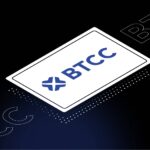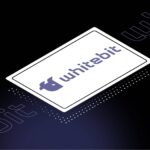In this review, we will be looking at the Boba Network, a second-layer (L2) blockchain based on the Ethereum, Avalanche, and BNB Smart Chain networks. Specifically, we will focus on Boba’s key features, how it works, its value proposition, and its benefits and drawbacks. Additionally, you’ll learn how to get started by connecting your crypto wallet and briding your assets.
About the Boba Network
Definition

Boba Network in brief:
- So far, the Boba Network has been successfully deployed on multiple base layer (L1) smart contract-based protocols, including Ethereum (ETH), Avalanche (AVAX), Fantom (FTM), and the BNB Smart Chain (BNB).
- The platform was first launched on the Ethereum mainnet in August 2021 then, followed by the Avalanche and BNB Smart Chain deployments in September and November 2022, respectively.
- Boba is now mainly developed and maintained by Enya.ai, a decentralized infrastructure solutions developer co-founded in 2018 by Stanford alum Alan Chiu and Associate Professor Jan Liphardt. Initially, however, the project was co-created with the OmiseGo (OMG) Network and referred to as OMGX. The platform underwent a name change in 2021 to its current Boba Network.
- As a second-layer (L2) platform, Boba leverages the security of its base-layer protocol while augmenting and expanding its capabilities. For instance, the Ethereum network is relatively slow compared to most of its competitors. However, it is more secure and commands one of the largest developer and user communities.
- Boba enhances Ethereum’s performance by enabling faster and cheaper transactions. And through the Hybrid Compute feature, these smart contracts can communicate with non-blockchain protocols for increased capabilities.
Features of the Boba Network

To achieve its capability, Boba Network has been developed with the following key features:
Hybrid Compute
As mentioned above, the Hybrid Compute is a system that enables smart contracts or decentralized applications (dApps) to interact with non-blockchain applications through APIs (application programming interfaces). It is worth noting that the Hybrid Compute feature is not a blockchain oracle.
The difference between the two is that a blockchain oracle serves as a way to obtain and relay off-chain data to be used on-chain while Hybrid Compute serves as a conduit for communication between off-chain applications and smart contracts.
Ethereum, and indeed most other smart contract-enabled platforms, are designed to enable intra-chain communications. However, with Boba, smart contracts can benefit from off-chain data sources and information, thereby enhancing their capability, functionality, and interoperability with Web2 properties.
Multi-chain Support
The Boba Network’s L2 scalability and augmentation capabilities have been brought to multiple blockchains, including Ethereum, Avalanche, BNB Smart Chain, Fantom (FTM), and Moonbeam (GLMR). This means that applications designed to run on these L1 networks can be easily ported over to Boba, where they can leverage the cheaper transaction fees, faster execution speeds, and Hybrid Compute capabilities.
Having multi-chain support enables developers and users alike to have diverse choices for their favorite settlement layer.
NFT Bridging
Non-fungible tokens (NFTs) are blockchain assets with unique properties that can be used to represent value. Boba enables users and developers to mint these assets cost-effectively on the platform and then bridge them over to the underlying base layer when and if needed.
This model is especially beneficial to users who try to mint and interact with NFTs on protocols such as Ethereum, which has steep transaction costs. It is expensive to create NFTs and sell them on Ethereum-based marketplaces. Game developers, for instance, have to contend with the creation of several NFTs, a process that can easily cost a fortune.
Boba reduces the cost of such transactions and introduces efficiency to the process.
Consequently, NFTs created on the supported base layers can also be bridged to the Boba platform, exposing them to increased utility, especially if their host platforms take full advantage of Boba’s suite of features.
Dual-fee tokens
Boba allows developers and platform users to pay transaction/gas fees using either the BOBA tokens or the native token of the base layer. For instance, if you are interacting with a dApp created for the Ethereum network, you can opt to pay fees using Ether (ETH) coins or BOBA tokens.
This option offers convenience for the user or developer, increases efficiency, and reduces conversion costs.
L1 Security
The Boba platform is as secure as the base layer because, as an L2 network, transaction settlement is done to the host blockchain. This means that if transactions are settled to the Ethereum blockchain, Boba inherits the former’s security. This is the same for the rest of the support base layers, including BNB Smart Chain and Avalanche.
Staking
Boba allows its native token-holders to earn passive income by staking tokens within the platform. Additionally, stakeholders can also participate in the governance of the platform through the Boba DAO (Decentralized Autonomous Organization).
Of note is that Boba has opted to implement the increasingly popular ve (vote-escrowed) tokenomics model introduced by Curve Finance. With this model, token holders are assigned a voting weight on their tokens based on how long they choose to stake them. The longer the staking period, the heavier their vote.
BOBA Tokenomics and Utility
Powering the Boba Network is the Boba token (BOBA), an ERC-20 token hosted on the Ethereum blockchain platform. BOBA has been tasked with three main functions, which are:
- Governance – Boba has introduced the use of decentralized governance through its DAO structure, also called the Boba DAO. To participate in this process, every user will require some BOBA tokens, which are locked for a specified period. The longer the period, the weightier the vote is. Token holders will be entitled to make or vote on proposals, and delegate their voting power to other users;
- Staking – the Boba Network rewards its BOBA holders that opt to stake their tokens using a portion of the transaction fees collected and distributed by the community. Staking is one way to receive passive income on blockchain-based platforms. The network pays out rewards using a new kind of token dubbed xBOBA, which hold the same voting rights as BOBA;
- Transaction fee – in the features section above, we mentioned that the Boba platform allows users to choose between two transaction fee payment methods – they can either use BOBA or the base layer’s native token. The difference when using either is that BOBA affords its users a 25% gas fee discount making it more appealing to use over ETH.
BOBA has a total supply cap of 500 million tokens, 34% of which are currently in circulation. 42% of the total supply (210 million tokens) has been reserved for the project treasury, 20% (100 million) for the team, and 28% for OmiseGo (OMG) holders. The rest of the token distribution is as shown below:

The team has scheduled an automatic token-unlocking feature to release 29,979,550 BOBA tokens every quarter starting on September 20th, 2022, and ending on June 20th, 2025. Following this date, all generated tokens will be in circulation.
How to get started with the Boba Network
The Boba platform allows you to bridge your assets between L1 to L2, and L2 to L2. This means that you can bridge your NFTs, for instance, from Ethereum to Boba, or between Boba and another L2 platform such as Polygon (MATIC).
In this tutorial, we will be bridging ETH coins from Ethereum to Boba as an example. To do that, we are using the MetaMask crypto wallet installed on our browser.
Before you proceed, ensure that you have a browser-installed wallet supported by the Boba platform, and deposit into it some tokens or coins to bridge. Once you are ready, proceed with the following steps.
Step 1 – Visit the Boba website
Navigate to the Boba platform website at https://boba.network/ and locate the [Bridge to BOBA] button, which is a link to the Boba bridge application.

There are two links on the homepage, but if you are trying to access the gateway from any other page, you will probably have the one link at the top right side. Clicking on the button will trigger a pop-up window prompt to select the base layer protocol you wish to connect to.

You’ll notice the five L1 blockchains currently supported on the Boba platform, as shown by the yellow arrows. Choose the appropriate network and click on the respective [Start using Boba Network] button. In our case, we want to bridge between Ethereum and Boba, so we select the first option.
You will be redirected to the gateway or bridging interface page, which is https://gateway.boba.network/ for Ethereum users.
Step 2 – Connect to your crypto wallet
The Boba gateway interface is simple and easy to navigate. You will notice the [Connect to Ethereum] button at the center-right side of the page. Click on it to trigger a connection request to your wallet software.

Log into your wallet account using your password and authorize the connection request.

Once you log in, this is the request you will see, shown above. Select the appropriate account you wish to use for this transaction. If you only have one account, you can use it or create a new account and transfer the funds to it before you bridge them to Boba.
Click [Next] after making your account selection.

In the follow-up screen, MetaMask will caution you on the kind of information that the application has requested to gain access to. In this case, the Boba platform will see your wallet address, account balance, and history plus, it will be able to make transaction requests to the wallet.
To authorize the connection, click the [Connect] button.
Step 3 – Bridge your assets.
Now that you have successfully connected to Boba, you are ready to bridge your assets. This is how the current Boba interface looks like once you have connected your wallet.

Select the asset you want to bridge by clicking on the large button labeled [Select Token], as shown above.
The Boba platform will display a pop-up of the assets you hold in your wallet account. If you have multiple tokens, you will have to scroll down to locate the one of interest to you. In our case, we want to bridge ETH, and since it is the only asset in our wallet, it is the only one displayed here.

Next, provide the number of tokens you want to bridge to Boba, then click on the [Bridge] button.

Boba will send a transaction authorization request to your wallet. Provide the authorization by signing the transaction. Boba will then deduct the specified number of ETH coins from your wallet and deposit a commensurate amount into your Boba wallet account.
You can then proceed to use these Boba-based tokens on the Boba-compliant smart contracts at a fraction of the cost you would if you had used the native L1 platform.
Note: The process outlined above is similar regardless of which L1 network you are using to bridge your assets. Boba will provide you with a different gateway for each of the supported base-layer networks, but the interface is the same, and they can all be used on the popular MetaMask wallet.
Is the Boba Network Safe?
There are two perspectives from which to consider the security of Boba. The first is its security according to the soundness of its smart contracts, while the other is a consideration of how secure the base layer is.
So far, Boba has had five successful deployments on five different base-layer blockchains. The security of each deployment will be considered based on the L1 infrastructure.
The second consideration for the security of Boba is its smart contracts, of which it has only conducted and reported one such audit from the blockchain security firm CertiK. Boba commissioned the audit In September 2021, and the report was given in October of the same year.
So far, that is the only security audit undertaken and reported to the public. According to CertiK, they identified one issue as a major vulnerability, with three others classified as informational. The major vulnerability was of a logical nature in which it was discovered that all BOBA tokens were set to be held by one wallet (the deployer) following the token generation event.
Having all tokens stored in a single wallet or under one entity is a huge centralization risk. According to the audit report, CertiK mentions that the Boba team acknowledged the vulnerability.
Finally, Boba maintains a well-incentivized bug bounty program where a critical vulnerability reported could earn the reporter up to $100,000. Such a program helps keep the platform secure.
Pros and Cons of the Boba Network

Pros
- Boba leverages the popularity and security of its base layer blockchains, making it easily accessible to developers and users alike;
- By inheriting the security of L1 platforms, it has proven to have sound security credentials as well;
- The Hybrid Compute feature extends the capabilities of most smart contracts, which leads to more utility;
- The Boba Network enables cheaper and faster transactions compared to carrying out the same transactions on the respective base layers;
- Boba has so far been deployed on five L1 platforms including Ethereum, BNB Smart Chain, and Avalanche, making it one of the first multi-chain L2 platforms;
- Despite offering different gateways for the bridging of base-layer assets, the Boba platform maintains a consistent and easy-to-use interface.

Cons
- The Boba network inherits its security from its underlying blockchain infrastructure, which means that any vulnerabilities of the base layer also affect it just as adversely;
- So far, Boba has been deployed on only five base-layer blockchains, which makes its availability limited. However, this is a drawback that might be easily fixed with additional deployments on more L1 blockchains.
Boba Network Customer Support
There are multiple channels through which you can get further information on Boba. Some of these include:
- Website: https://boba.network/
- Documentation: https://docs.boba.network/
- Resource Center: https://boba.network/learn/
- Discord forum: https://boba.eco/discord
- Twitter: https://boba.eco/twitter
- Telegram: https://boba.eco/telegram
Final thoughts
There is a widely believed narrative in the cryptocurrency space that it is hard to solve the blockchain trilemma of security, scalability, and decentralization. The theory is that a blockchain protocol will only be able to achieve at most two of these properties but not all.
As a circumvention, Boba opted to focus on the scalability aspect and focus on augmenting base-layer protocols that are already secure enough and relatively decentralized. Take, for instance, Ethereum, which has been struggling with its throughput but has a more secure infrastructure than most blockchains.
By creating a second-layer platform based on Ether, Boba has managed to augment it while leveraging Ethereum’s security. So far, its deployment has proven successful, and its expansion to other L1 protocols seeks to introduce this success to a wider audience.
Risk Disclosure and Disclaimer: The information provided in this review should not be regarded as investment advice. Cryptocurrency assets experience high market volatility, and therefore buying, selling, and trading them exposes you to significant financial risks.
Frequently Asked Questions on the Boba Network
What is Boba Network?
The Boba Network is a layer-2 scalability and augmentation platform enabling smart contracts to expand their capabilities by offering a communication conduit to non-blockchain APIs via its Hybrid Compute feature.
Is Boba a side chain?
No, the Boba Network is not a side chain but rather a second-layer implementation. This means that as opposed to a side chain that maintains its own security infrastructure, an L2 blockchain piggybacks on the security of its base layer while augmenting its functionality and expanding its capabilities.
Is Boba safe?
Boba employs a two-pronged security approach where in the first instance, it leverages the security of its base layer protocol. In the second instance, the platform ensures that its smart contracts are secure for use, and based on an audit by CertiK, it seems to have achieved that second goal.
How to invest in the Boba Network?
There are two main ways to invest in the Boba Network – first, you can become an active user of the platform and bridge your assets from supported base-layer protocols to its network. Or else, you can develop decentralized apps (dApps) that can be used on Boba, thereby attracting users to the platform.




